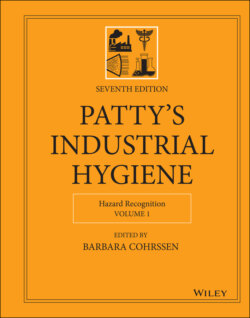Читать книгу Patty's Industrial Hygiene, Hazard Recognition - Группа авторов - Страница 46
2 BUSINESS ETHICS AND CORPORATE SOCIAL RESPONSIBILITY
ОглавлениеEthical challenges for individual industrial hygienists and the companies that employ them grew substantially with the development of the global economy starting in the 1990s. Production of consumer goods – such as apparel, electronics, medical equipment, sports equipment, toys, and home appliances – is now done in long global supply chains using factories in developing countries where health‐protective regulations either do not exist or exist but are rarely enforced. Major corporations – the “brands” – employ first‐tier contractors, who hire sub‐contractors all the way down to industrial home work in workers' homes. For almost three decades, news media coverage of “sweatshop” conditions in global supply chains has documented widespread violations of labor laws (unpaid wages, excessive working hours, harassment and discrimination, and violations of freedom of association) as well as unsafe and unhealthy working conditions in most brand's and industry supply chain (2,3).
Beyond consumer goods manufacturing, resource extraction industries (mining, oil and gas, agriculture, and forestry) have faced public condemnation for adverse impacts from their operations on the environment and the health of nearby communities, in addition to concerns about violations of labor laws and unhealthy working conditions for their own direct and subcontracted workforces (4).
Industrial hygienists are faced with acting ethically and protecting workers' health and safety in the context of business models and sourcing policies that prioritize low‐cost, high‐profit production in countries having few or no regulations or enforcement, and are desperate for economic development. Moreover, courts in the brands' home countries have recently ruled that brands' legal liability stops at the national boundary, particularly when there is no direct contractual relationship between the brand buyer and the factory producing the goods in the multi‐tiered supply chain.
Starting with the apparel industry in the early 1990s, corporate brands and their supply chain managers (including some industrial hygienists) have sought to produce goods in an ethical fashion via the development and implementation of “corporate social responsibility” or CSR programs. CSR programs – now also called “sustainability” programs – have spread to virtually every industry and global supply chain. Essential elements of CSR programs include:
A corporate “code of conduct” where individual companies declare their intention to comply with national and international laws and standards, and to follow sourcing practices that respect supply chains workers' legal rights, health, and safety;
Codes of conduct developed by industry associations or organizations of a specific economic sector (such as apparel or electronics);
Development of corporate‐level CSR or sustainability departments to monitor compliance with these codes of conduct throughout the company's supply chain;
Use of “third‐party monitors” to evaluate CSR compliance in corporations' global supply chain factories by external companies; and
Individual corporate initiatives to mitigate the environmental impact of its operations, improve community health, or enhance the lives of factory workers making the companies' products.
Depending on the industrial sector and corporation, industrial hygienists have become part of CSR or sustainability departments with the responsibility of ensuring compliance with their employer's CSR program. Academic researchers estimate that as much as $8 billion a year is spent worldwide on CSR programs designed to improve working conditions and respect workers' legal rights (8).
Despite this CSR spending, working conditions and respect for workers' rights in global supply chains have not significantly improved over the last 25 years (9). Documentation of ongoing unsafe and illegal conditions in global supply chains is generated every week by multiple sources3:
News media reporting, both print and electronic;
Reports from nongovernmental organizations (NGOs) concerned with environmental degradation, labor issues, and women's and human rights;
Reports from “multi‐stakeholder” organizations involving corporations, government agencies, and NGOs;
Reports from corporate CSR or sustainability departments on their own company's operations; and
Analysis from academic researchers, including from business school faculty.
The reason for the lack of progress is that the underlying causes of unsafe and illegal working conditions have not been addressed by CSR programs. These causes include sourcing practices and a business model that prioritizes the lowest possible cost, fastest delivery time, and highest possible quality; ineffective and corrupted audits or monitoring of supply chain factories; and the lack of any meaningful participation by workers in the CSR programs; and a dearth of trained health and safety personnel available to be employed by supply chain manufacturers. A recent study of a 10 000‐worker garment factory complex in Vietnam which had been audited 26 times by CSR monitors in 2015, and yet was found to have substantial violations of labor law and serious health and safety hazards in 2016, is a prime example of the inability of CSR programs to improve supply chain conditions (10).
